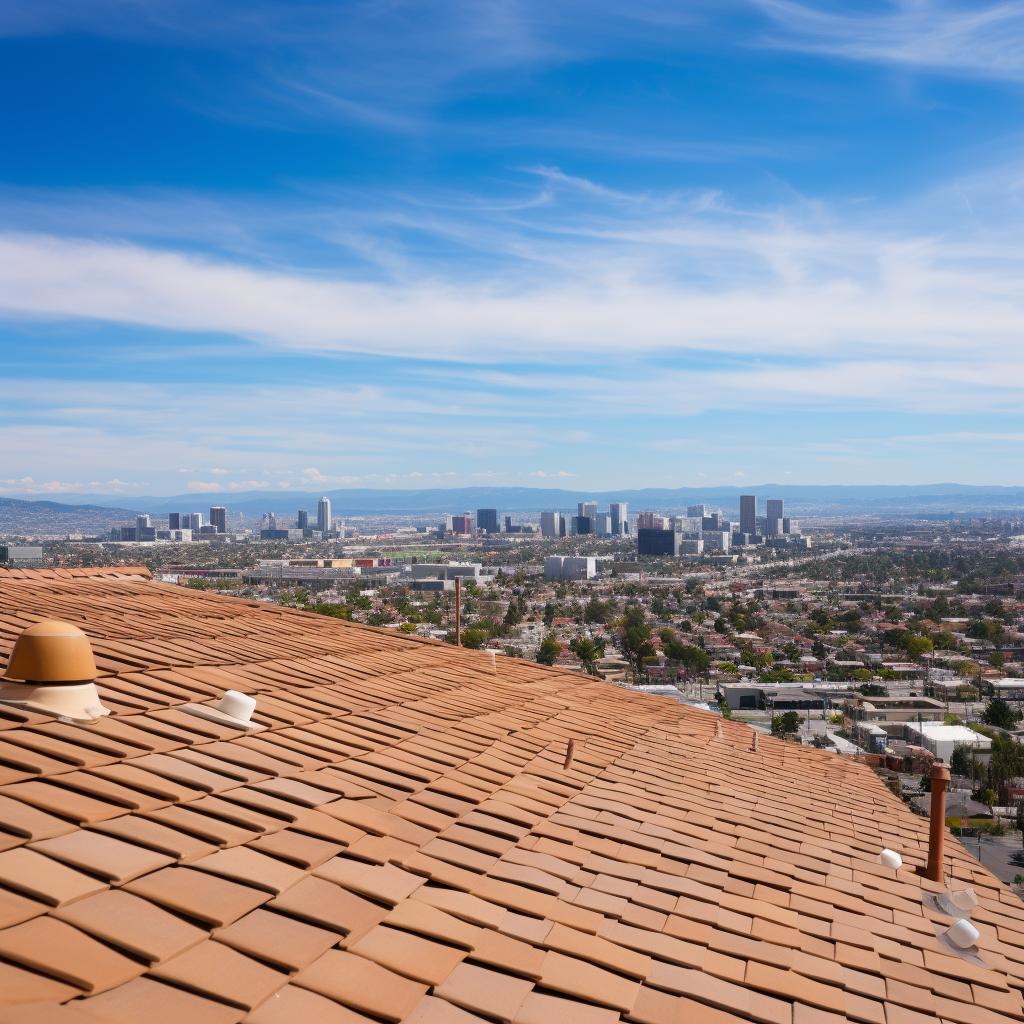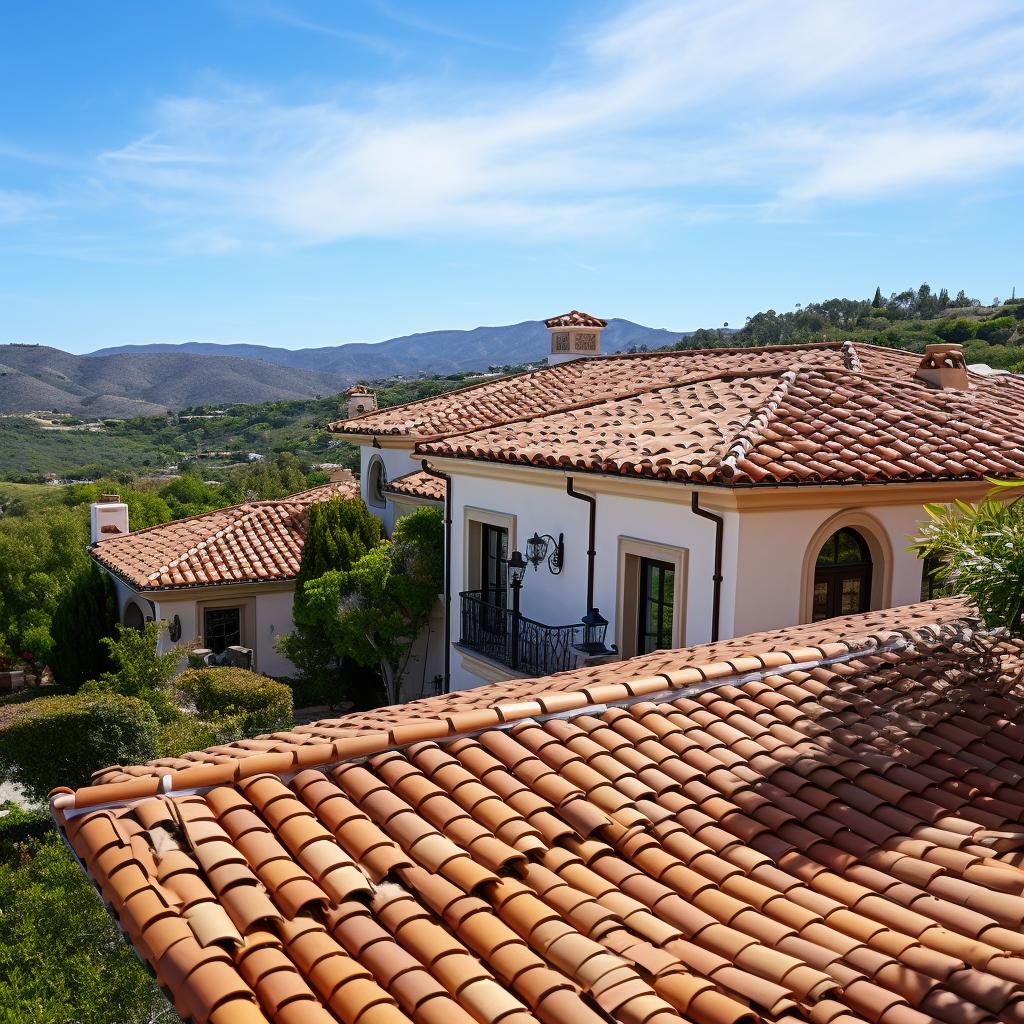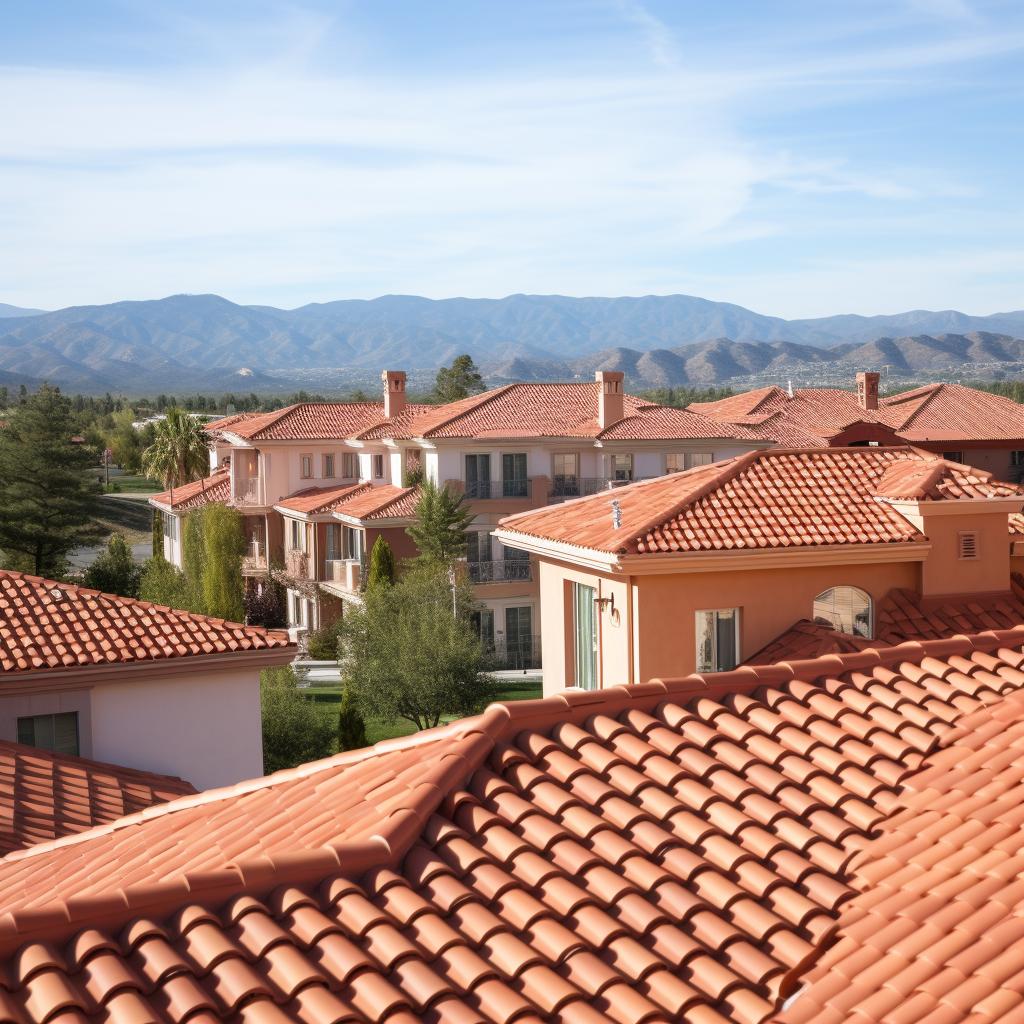The roof over your head does more than just protect you from the elements-it’s a critical component in defining both the aesthetic appeal and market value of your home. In Ontario, where the weather can be as diverse as its people, having roofing that can withstand the Canadian seasons is not an option; it’s a necessity.
This intersection of functionality and aesthetics is at the heart of Ontario’s dynamic roofing industry. The region’s latest innovations have proven to be a game-changer for homeowners looking to enhance their property’s visual charm while ensuring it remains impervious to even the most severe weather conditions.
At the forefront of these advancements is ontario weather roofing, a term that encapsulates the resilience required from materials and designs crafted to navigate the unique climatic challenges faced by Canadians. With new technology paving the way for durable yet attractive roofing options, there is much to explore regarding how these innovative solutions impact home value, curb appeal, and resistance to adverse weather phenomena.
By understanding this evolution in roofing practices, homeowners can make informed decisions that will not only secure their household but also provide potential financial benefits.
In this article, we will delve into how Ontario has become a hub for cutting-edge roofing technology that does more than just cover homes-it transforms them. From increasing curb appeal with sleek, modern designs to enhancing weather resistance with superior engineering, there are multifaceted impacts on investment in innovative roofing systems.
Plus, thanks in part to these advances, Ontarians now enjoy an expansive array of choices that fuse style with security-a combination that is propelling property desirability sky-high. Join us as we unpack how groundbreaking developments in Ontario’s roofing sector are revolutionizing homes across the province.
The Evolution of Roofing in Ontario
Roofing in Ontario has been on a transformative journey, deeply influenced by the region’s diverse environmental conditions and cultural history. Of course, indigenous materials and methods dominated the traditional roofing landscape. These vernacular techniques have their roots in utilitarian simplicity, often using readily available resources like wood shingles made from cedar, which offered some resistance to the damp climate and provided straightforward installation.
| Period | Materials Used |
|---|---|
| Pre-20th Century | Cedar Shingles, Thatch |
| Early to Mid-20th Century | Asphalt Shingles, Slate Tiles |
| Late 20th Century – Present | Metal Roofing, Solar Tiles, Green Roofing Systems |
The evolution of roofing technology has marched steadily forward. In response to various challenges presented by the Ontario weather roofing needed to adapt continuously.
The early to mid-20th century saw the proliferation of affordable asphalt shingles which became ubiquitous due to their cost-efficiency and ease of installation. Yet as demands for increased performance grew louder against the backdrop of extreme cold spells, high winds, and heavy snow loads that characterize Ontario’s weather patterns, stronger materials like metal and engineered solutions such as truss systems came into widespread use.
Continuous advancements have led today’s roofing industry beyond mere function towards integrated solutions that are sensitive both to aesthetics and environmental concerns. The modern era in Ontario’s roofing history is defined by innovative materials that not only stand up better to harsh weather but also offer improved energy efficiency-a culmination of years’ worth of experience combating Canadian climates combined with burgeoning technological capabilities.
There has been a marked increase in the adoption of green roofs and solar-integrated systems across urban Ontario settings driven by a more eco-conscious populace and incentives at various levels of governance pushing for sustainable living practices. This push towards sustainability coupled with aesthetic flexibility embodies a shift from purely pragmatic sheltering towards comprehensive architectural statements capable of transforming how buildings interact with their environments literally from the top down.
Roofing Materials Redefined
The roofing industry in Ontario has taken significant strides over recent years, catalyzing a transformation in the materials used to construct durable and attractive roofs. Traditional materials like asphalt shingles and cedar wood are now being re-invented with advanced technologies, leading to exceptional characteristics such as improved lifespan, energy efficiency, and resilience to environmental factors.
For instance, modern composite shingles are designed to mimic the appearance of natural materials while providing superior resistance against fading, cracking, and weather-related damage.
Innovative material compositions are among the core elements setting modern roofing solutions apart. These new materials incorporate properties such as UV radiation reflectivity, thermal insulation capabilities, and enhanced toughness. Metal roofs coated with reflective pigments not only repel heat effectively during summer but also improve overall home insulation – a critical attribute for handling Ontario’s diverse climate. Green roofing systems have also gained traction due to their environmental advantages and ability to regulate building temperatures.
| Material Type | Traditional Lifespan | Modern Lifespan | Energy Efficiency |
|---|---|---|---|
| Asphalt Shingles | 15-20 years | 25-30 years | Moderate-High (Reflective Innovations) |
| Metal Roofing | 30-45 years | 50+ years (with coatings) | High (Reflective Coatings) |
One aspect that particularly aligns with the ontario weather roofing challenge is the adaptability of synthetic underlayment products compared to traditional felt paper. These synthetic options offer robust waterproofing and create a better seal against ice damming-a common issue during Ontario’s chilly winters. Moreover, as homeowners become increasingly conscious about their eco-footprint and energy consumption, these enlightened roofing choices not only address those concerns but often translate into monetary savings through reduced heating and cooling bills.

Overall, the emergence of advanced materials for roofing directly addresses the evolving demands for sustainability without compromising on aesthetics or quality. As homeowners seek solutions that promise longevity amidst extreme conditions while contributing positively to curb appeal and energy performance, innovation in this sector appears set to continue its upward trajectory.
Ontario Weather Roofing
Ontario’s unique climate poses significant challenges for homeowners, necessitating roofing solutions that not only withstand the elements but also contribute positively to a house’s overall value and visual appeal. One of the most vital considerations when it comes to Ontario weather roofing lies in its ability to combat the diverse and often extreme Canadian weather conditions that residents face throughout the year.
Engineering Roofs for Extreme Weather
Within Ontario, the roofing industry has evolved significantly to meet the demands of its diverse climate. The region sees a full spectrum of weather – brutal winters, scorching summers, severe thunderstorms, and strong winds. Engineering roofs to resist this barrage of stress requires innovative thinking.
Modern materials such as high-performance asphalt shingles, metal roofing with special coatings, and composite materials have been developed. These materials are designed with flexibility and resilience in mind, allowing them to expand and contract with temperature fluctuations without cracking or warping. In addition to material strength, installation methods have been refined to ensure that every shingle or panel can withstand high winds and heavy snow loads which are common in Ontario’s unpredictable weather patterns.
Tailored Solutions for Snow and Ice
One particularly troublesome aspect of Ontario’s winter weather conditions is the accumulation of snow and ice on rooftops. Advanced roofing systems now integrate features like thermal breaks and dark-colored materials which help in melting snow faster thus reducing the load on roof structures.
Gutter systems have also been innovated upon; they’re equipped with heating mechanisms or constructed using non-stick surfaces that prevent ice damming – a common cause for water damage during thaws. For homes in zones prone to heavy snow accumulation, sloped roof designs are favored over flat ones as they facilitate natural shedding of snow thereby minimizing risk.
Enhancing Durability Through Technology
It’s not just about having strong materials; it’s also about ensuring those materials maintain their integrity over time against exposure to UV radiation, precipitation, and temperature extremes characteristic of Ontario seasons. Roofing technology inclusions such as UV-resistant coatings aid in this regard by preventing sun damage which can lead to deterioration over time.
Additionally, self-healing shingles are gaining traction where microcapsules filled with adhesive release their content upon being breached by hail or debris impact – automatically sealing small punctures that could otherwise grow into larger leak issues.
Adapting these innovations helps secure homes from various aspects of Ontario’s challenging climate while ensuring longevity – an essential feature for any homeowner considering both practical needs against investment returns when choosing their ideal roofing system.
Aesthetic Innovation
In the dynamic world of home design and renovation, the roof over one’s head does more than protect against the elements; it’s a prominent feature that can significantly influence a home’s visual appeal. With innovation at the forefront, roofing trends in Ontario are seeing a surge in options that enhance curb appeal. These roofing solutions marry functionality with remarkable style, offering homeowners a chance to express individual tastes while increasing their property’s attractiveness and value.
Current Trends in Roofing Aesthetics
Roofing aesthetics have come a long way from the uniform looks of the past. Today, homeowners can choose from a wide array of colors, textures, and materials that not only complement but also elevate the overall appearance of their homes. Earthy tones that blend seamlessly into natural surroundings remain popular, but there is also an increase in demand for bold color choices that allow homeowners to stand out in their neighborhoods.
Innovative materials such as composite shingles offer the look of traditional cedar or slate roofs without their associated maintenance concerns. This gives homeowners an opportunity to showcase timeless beauty with next-generation durability.
Impact on Curb Appeal
A stylishly designed roof can substantially impact curb appeal because it typically accounts for about 40% of a home’s visible exterior. By selecting premium roofing materials with advanced designs and colors specifically chosen to match architectural styles – from Victorian elegance to sleek contemporary lines – homes achieve an enhanced level of sophistication and allure that catches eyes and holds attention.
Moreover, new reflective roofing technologies not only add aesthetic value but also improve energy efficiency by deflecting ultraviolet rays and reducing heat absorption.
Incorporating Ontario Weather Considerations
While seeking improved curb appeal through aesthetically forward roofing options, Ontario residents must critically consider ontario weather roofing demands due to seasonal extremes. Locally-sourced materials are increasingly being designed with this very aspect in mind; they are not only attractive but built to withstand freezing winters, scorching summers, and everything in between.
For example, metal roofs have gained popularity for their sleek profile and capacity to shed snow easily during harsh Canadian winters. Additionally, new sealant technologies contribute added layers of weather protection while preserving the aesthetic integrity of roofing systems-ensuring long-term elegance even under demanding climatic conditions.
Through this balance between eye-catching design features and climate resilient properties, innovative roofing solutions are redefining both form and function across Ontario’s diverse landscapes-a vital step forward for those aiming to fuse aesthetic innovation with practical living solutions.
Smart Roofing
In an age where technology has become intertwined with nearly every aspect of our daily lives, it’s only natural that it would also revolutionize the way we think about roofing. The emergence of smart roofing in Ontario reflects a significant leap forward, melding traditional roofing methods with cutting-edge technologies designed to optimize performance in living spaces.

From solar-integrated systems that produce energy to automated sensors that monitor and react to environmental changes, the possibilities for enhanced home efficiency are broadening rapidly.
One of the key components of this technological integration is the advent of solar-integrated roofing materials. These innovative products go beyond traditional solar panel installations by seamlessly blending photovoltaic cells into shingles or tiles themselves. This not only generates electricity but does so without impacting the aesthetic appeal of a home’s exterior.
They represent a dual investment in both green energy and attractive design. Homes equipped with these systems benefit from reduced electricity bills and may even contribute power back to the grid, thereby yielding potential financial returns on top of energy efficiency gains.
Another aspect of smart roofing features embedded sensor technology aimed at monitoring roof health and weather conditions, providing real-time data on various factors such as temperature, humidity, and structural integrity. These systems can be programmed to send alerts when maintenance is required or if severe weather conditions are imminent, thus offering homeowners a proactive approach towards roof upkeep and longevity.
In regards to Ontario weather roofing challenges specifically, these technological enhancements give residents an upper hand against the province’s notorious climate swings-from icy winters to hot summers-ensuring their homes stay protected regardless of what Mother Nature throws their way. Adopting smart technology within a roof not only modernizes your home but also fortifies its resilience against increasingly unpredictable weather patterns.
Longevity and Maintenance
Innovative roofing technologies don’t just offer immediate improvements in aesthetics and weather resistance; they also present substantial long-term benefits. Homeowners looking into ontario weather roofing must consider the lifespan of their investment. The development of durable materials and intelligent designs directly influences the longevity of a roof. Through superior craftsmanship, modern innovative roofs are designed to endure for decades, necessitating fewer repairs and less frequent replacements compared to traditional roofs.
When discussing maintenance, it’s imperative to acknowledge that even the most advanced roofing systems require some level of upkeep to perform optimally over the years. Here are some preventative measures and care tips that homeowners should consider:
- Regular Inspections: Schedule yearly inspections with a trusted professional to catch potential issues early on.
- Cleaning: Keep gutters clear of debris and remove any buildup from the roof surface that could cause damage over time.
- Professional Repairs: Addressing small repairs swiftly can prevent larger, more costly problems in the future.
Maintaining an innovative roof is not only about preserving its function but also sustaining its appearance, which contributes significantly to curb appeal. A well-kept roof reflects positively on the overall value of the property.
While there might be upfront costs associated with high-quality innovative roofing solutions, a cost-benefit analysis often reveals these investments to be sound financial decisions. Reduced energy bills due to better insulation properties, along with decreased frequency of expensive repairs or complete replacements, showcase how cutting-edge roofs can lead to financial savings in the long run.
The Financial Upside
In the competitive real estate market of Ontario, homeowners are constantly seeking ways to enhance their property value. The roofing system of a home is one such aspect that can significantly influence the overall marketability and price point. The implementation of innovative roofing technologies has emerged as a shrewd investment strategy with several financial benefits at its core.
- Energy Efficiency: Modern roofing materials are designed to reflect sunlight and provide better insulation. This leads to decreased energy costs for heating and cooling, which is an attractive attribute for potential home buyers looking to save on utility bills. A roof boasting energy-efficient qualities can prove to be a pivotal selling point during property negotiations.
- Raised Property Valuation: An advanced roofing system replete with features such as durability and improved weather resistance directly contributes to a higher property valuation. Roofing innovations that adapt well to the ontario weather roofing necessities guarantee longevity and lesser need for repairs or replacements – factors leading appraisers and prospective buyers to view the property more favorably.
- Increase in Curb Appeal: Beyond functionality, an aesthetically pleasing roof design amplifies curb appeal, creating a strong first impression. Use of premium materials, trending designs, and colors that harmonize with the home’s architecture make it stand out in listings and viewings, thus boosting its desirability amongst potential buyers.
Furthermore, homes equipped with contemporary roofing solutions enjoy an enhanced perception of quality and care. A modern roof suggests that homeowners have invested in preserving their home’s integrity against elements like harsh winters or biting winds – a narrative that resonates strongly within regions known for challenging climates. It conveys resilience, safety, and comfort; intangible aspects that evoke emotional responses from potential buyers who are keen on purchasing not just a house but a secure haven for themselves.
By embracing state-of-the-art Ontario weather-resistant roofing options homeowners can pitch their properties competitively when it’s time to sell. These innovative systems often come accompanied by warranties extending over decades which can be transferred upon sale; this feature acts as an added security blanket for new homeowners against future expenses related to roofing issues.

Not only do these cutting-edge roofs support the structural health of the dwelling-an imperative concern in itself-they also shape how potential buyers perceive value before they even step inside. The combination of utility savings, elevated valuations due to product longevity and reliability, coupled with pleasing aesthetics present compelling reasons why investing in innovative Ontario-based roofing solutions will bump up your home’s overall value appreciably.
Selecting the Right Roofing Partner in Ontario
Choosing the right roofing contractor in Ontario is a critical decision that goes beyond just who can offer the lowest bid. A roofing project is an investment into the home’s longevity, weather resistance, and overall value-a task that requires expertise and reliability. Homeowners should prioritize finding a roofing partner with a robust portfolio that showcases their experience with innovative solutions tailored to Ontario’s unique climate challenges.
When examining potential contractors, it’s imperative to assess their familiarity with modern roofing materials and techniques, especially those designed for ontario weather roofing considerations. The chosen contractor should have in-depth knowledge about which new material compositions and designs work best in combating Canadian winters and unpredictable summers. It isn’t only about having skilled labor; understanding the science behind material choices means homeowners receive expert guidance on products offering both aesthetic appeal and durable protection against harsh elements.
Another essential factor to consider when selecting your roofing partner is customer service quality. This encompasses everything from the initial consultation to post-installation support. The ideal partner operates transparently with clear communication channels-ensuring you’re kept abreast of progress throughout the installation process-and offers comprehensive warranties that cover both materials and craftsmanship.
Such assurances provide peace of mind that any unforeseen issues will be promptly addressed without additional financial burdens down the line. Therefore, engaging with a company that values customer satisfaction as highly as technical proficiency can greatly benefit any homeowner seeking long-lasting impact through top-tier roofing innovation.
Conclusion
The advancement of roofing technology in Ontario illustrates a magnificent fusion of aesthetics, practicality, and innovation. Homeowners have at their disposal an array of options that not only elevate the visual appeal of their properties but also offer formidable protection against the province’s diverse climate. The importance of investing in quality roofing is irrefutable, as it proves to be a crucial component in safeguarding homes, enhancing energy efficiency, and boosting market value.
Looking towards the future, Ontario weather roofing remains a pivotal focus for both homeowners and industry professionals. With ever-evolving materials and designs engineered to withstand harsh climatic conditions, residents can confidently rely on innovative solutions that promise longevity and reduced maintenance costs. Whether through smart technology integrations like solar roofing or the utilization of new composite materials, these enhancements are setting Ontario apart as a leader in weather-resistant and energy-efficient home design.
As individuals consider upgrading or renovating their roofs, the multitude of benefits stemming from these innovative solutions becomes increasingly clear. From enjoying greater peace of mind during extreme weather events to capturing the admiration of neighbours and potential buyers with striking curb appeal-selecting the right roofing system is an informed decision that impacts both immediate comfort and long-term financial returns.
Homeowners in Ontario now stand at the forefront of a revolutionized roofing era, equipped with knowledge and opportunities that promise a stronger, more beautiful living environment for years to come.
Frequently Asked Questions
Do Roofers Work in the Winter in Ontario?
Roofers in Ontario do work in the winter, but it’s less common due to safety concerns and the effect of cold temperatures on materials. The process is likely slower and more challenging during this season, as ice and snow can create hazardous conditions and many roofing materials require warmer temperatures to properly adhere and seal.
What Temperature Is Too Hot for Roofing?
Roofs are often deemed too hot for work when temperatures soar above 90 degrees Fahrenheit. Excessive heat can pose health risks for roofers, such as heat stroke and dehydration, while also affecting the installation process, as shingles may become overly pliable and difficult to work with correctly.
What Temperature Is Too Cold for Roofing?
In terms of roofing, temperatures below 40 degrees Fahrenheit are generally considered too cold for most roofing activities. At colder temperatures, materials can become brittle and harder to install, adhesives may not set properly, and equipment can be more difficult to operate.
Can It Be Too Cold to Roof a House?
It can indeed be too cold to roof a house. If the temperature drops significantly below freezing point, it’s often advised to postpone the work until conditions improve because cold weather affects how materials function and worker safety is compromised on icy or frost-covered roofs.
Do People Work on Roofs in the Winter?
During winter months people do work on roofs; however, they must take additional precautions due to potential hazards like ice and snow. While certain emergency repairs may be unavoidable in winter conditions, preventative maintenance is typically scheduled during more temperate times of year.
Is Roofing Seasonal in Canada?
Roofing in Canada tends to be seasonal due to extreme weather variations across the country. The busiest times for roofing professionals often align with milder weather that allows for safer working conditions and better application of materials typically from late spring through early fall.
What Time of Year Are Roofers the Busiest?
The peak time for roofers usually falls between late spring through till late summer or early autumn when weather conditions are most favorable for outdoor construction work—including long daylight hours—allowing for greater productivity without the impediments associated with cold or wet weather.
What Time of Year Is Best for Roof Repairs?
The best time of year for roof repairs is usually during spring or fall when moderate temperatures make it easier to handle materials and apply them effectively without disruption from intense heat or frigid cold—the ideal climate scenarios contribute both to quality craftsmanship and worker safety on rooftops.


